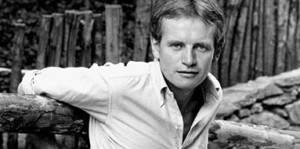
Bruce Chatwin may have left his body before he turned forty-nine but in the years that he was with us, he lived a life that was rich in experience, travelled to places that had fallen off the map, explored living, dead and reincarnated civilisations, experienced the cultural lore of indigenous peoples and remained a nomad of the spirit, restlessly and relentlessly in search of the essence of the living experience. He was the classic traveller who emphasised the journey more than the destination. This is perhaps why he was always ‘present’ and engaged in what he experienced. It gave him the unique opportunity to be free to explore and sink into the ‘now’. That’s what enabled the incredible dynamism of perspective and expression in his writing.
What gave his writing a width and depth wasn’t a seriousness of tone but a playfulness in the way he shared profound ideas and experiences sensitively portrayed alongside almost jocular expressiveness.
Timbuctoo, Tumbucto, Tombouctou, Tumbyktu, Tumbuktu or Tembuch? It doesn’t matter how you spell it. The word is a slogan, a ritual formula, once heard never forgotten. At eleven I knew of Timbuctoo as a mysterious city in the heart of Africa where they ate mice – and served them to visitors. A blurred photograph, in a traveller’s account of Timbuctoo, of a bowl of muddy broth with little pink feet rising to the surface excited me greatly.
…There are two Timbuctoos. One is the administrative centre of the Sixth Region of the Republic of Mali…’the meeting place of all who travel by camel or canoe’…and then there’s the Timbuctoo of the mind – a mythical city in a Never-Never Land, an antipodean mirage, a symbol for the back of beyond or a flat joke.
From Anatomy Of Restlessness
The Songlines, perhaps his most personal yet public expression of encounters with aboriginal cultures, effectively brings out the story of a traditional people and their almost absurd engagement with Chatwin. His elusive simple narrative technique drives the book along with such gathering force that the reader quite loses his/her bearings and is carried far from his/her own reality then is dramatically thrown back to terra firma. In Patagonia, his first book, which became an instant classic, unravels its narrative through a series of brief chapters, which come together to form a mosaic of images and voices. Local history is pieced together to create an unforgettably luminous Patagonian highlighted by “madmen, dreamers, and everyday eccentrics.” (The Quarterly Conversation). Chatwin weaves in the almost mythic characters of the bank robbers Butch Cassidy and the Sundance Kid, the Brujeria sect which was in the habit of using dead Christians into waistcoats, the maker of the first Yaghan Indian language dictionary and a host of others, stories and accounts mutating each time the author revisited them. Interestingly, because he chose this narrative format, he was able to spin from the sublime to the pedestrian, from myth to reality and from the funny to the tragic…thus giving the book expansive dimensions.
The author repeats this feat in different ways through his short but brilliant literary career which followed.
I salute the genius of Bruce Chatwin that sets him apart as one of the most significant visionary minds of the 20th century.


